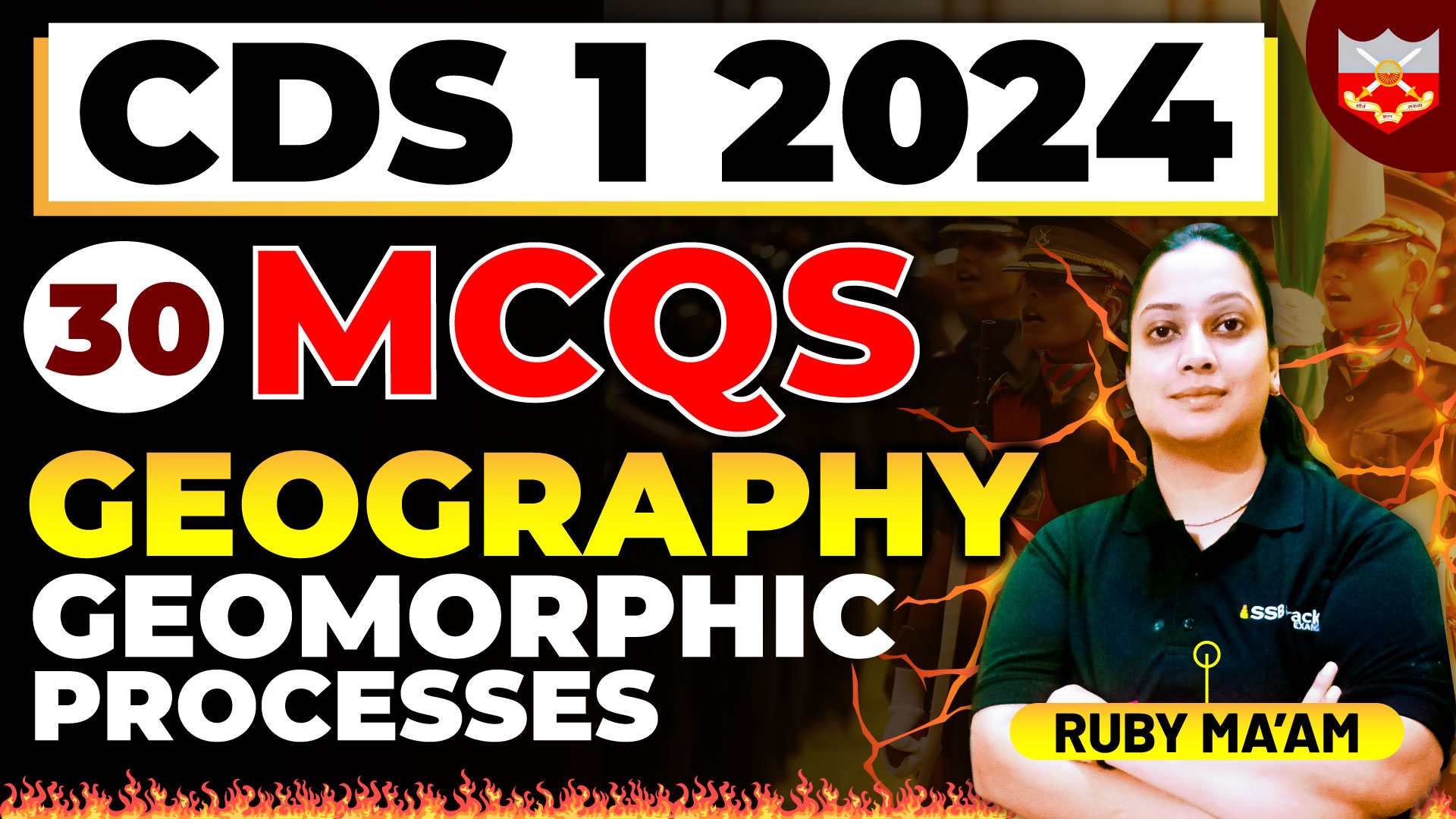For candidates preparing for the Combined Defence Services (CDS) examination, a comprehensive understanding of various subjects is crucial. While subjects like mathematics, general knowledge, and English are commonly emphasized, the importance of geography, particularly geomorphic processes, cannot be overlooked. Geomorphic processes play a significant role in shaping the Earth’s surface, and their understanding is vital for aspirants aiming to excel in geography-related questions in the CDS examination.
What are Geomorphic Processes?
Geomorphic processes refer to the natural processes that modify the Earth’s surface over time. These processes are responsible for the creation of landforms such as mountains, valleys, plains, and coastlines. Geomorphic processes can be classified into several categories, including:
- Weathering: Weathering is the process by which rocks and minerals are broken down into smaller particles through physical, chemical, or biological means.
- Erosion: Erosion involves the removal and transportation of weathered materials by agents such as water, wind, ice, and gravity.
- Deposition: Deposition occurs when eroded materials are deposited or settled in a new location, leading to the formation of landforms such as beaches, river deltas, and alluvial plains.
- Tectonic Processes: Tectonic processes, including plate tectonics, volcanic activity, and earthquakes, play a crucial role in shaping the Earth’s surface by creating mountains, rift valleys, and other landforms.
Importance for CDS Aspirants
- Physical Geography Section: In the CDS examination, the geography section covers various topics, including physical geography. Geomorphic processes constitute a significant portion of physical geography and are often tested in the exam. Candidates need to understand the mechanisms and effects of these processes to answer questions accurately.
- Understanding of Landforms: Knowledge of geomorphic processes enables aspirants to comprehend how different landforms are created and evolve over time. This understanding is essential for interpreting maps, analyzing geographical features, and answering questions related to landforms and their characteristics.
- Environmental Geography: Geomorphic processes interact with the environment, influencing factors such as soil formation, vegetation patterns, and the distribution of natural resources. CDS aspirants must grasp these relationships to address questions related to environmental geography effectively.
- Disaster Management: Geomorphic processes, such as earthquakes, landslides, and floods, can lead to natural disasters with severe consequences for human populations. Understanding the underlying causes and mechanisms of these processes is crucial for disaster management and mitigation efforts, which are pertinent topics in the CDS examination.
Preparation Strategies
To excel in the geography section of the CDS examination, aspirants should adopt the following strategies:
- Conceptual Clarity: Develop a clear understanding of key geomorphic processes, their characteristics, and their effects on the Earth’s surface.
- Case Studies and Examples: Supplement theoretical knowledge with real-world examples and case studies to reinforce concepts and understand the practical implications of geomorphic processes.
- Maps and Diagrams: Practice interpreting maps, diagrams, and cross-sectional profiles to visualize the effects of geomorphic processes on landforms and geographical features.
- Current Affairs: Stay updated on recent geological events, such as earthquakes, volcanic eruptions, and landslides, as they often feature in the CDS examination and provide practical examples of geomorphic processes in action.
- Mock Tests and Previous Papers: Solve mock tests and previous years’ question papers to familiarize yourself with the exam pattern, question types, and time management strategies for the geography section.
In conclusion, a thorough understanding of geomorphic processes is indispensable for CDS aspirants preparing for the geography section of the examination. By mastering these concepts and their applications, candidates can enhance their knowledge base, improve their problem-solving skills, and increase their chances of success in the competitive exam.
- Which Force Helps In Geomorphic Processes
A. Endogenetic Forces
B. Exogenetic Forces
C. Both a & b
D. None
ANSWER: C - The Phenomenon Of Wearing Down Relief Variations Of The Surface Of The
Earth Through Erosion Is Known As
A. Weathering
B. Degradation
C. Aggradation
D. Gradation
ANSWER: D - Which Of The Following Processes Is Degradational Process
A. Deposition
B. Diastrophism
C. Volcanism
D. Erosion
ANSWER: D - Which Of The Following Is The Continental Building Process
A. Epeirogenic Processes
B. Volcanism
C. Earthquakes
D. Orogenic Processes
ANSWER: A - Debris Avalanche Can Be Included In Which Category
A. Landslide
B. Slow Flow Mass Movements
C. Rapid Flow Mass Movements
D. Subsidence
ANSWER: C
For more questions refer video & pdf



















